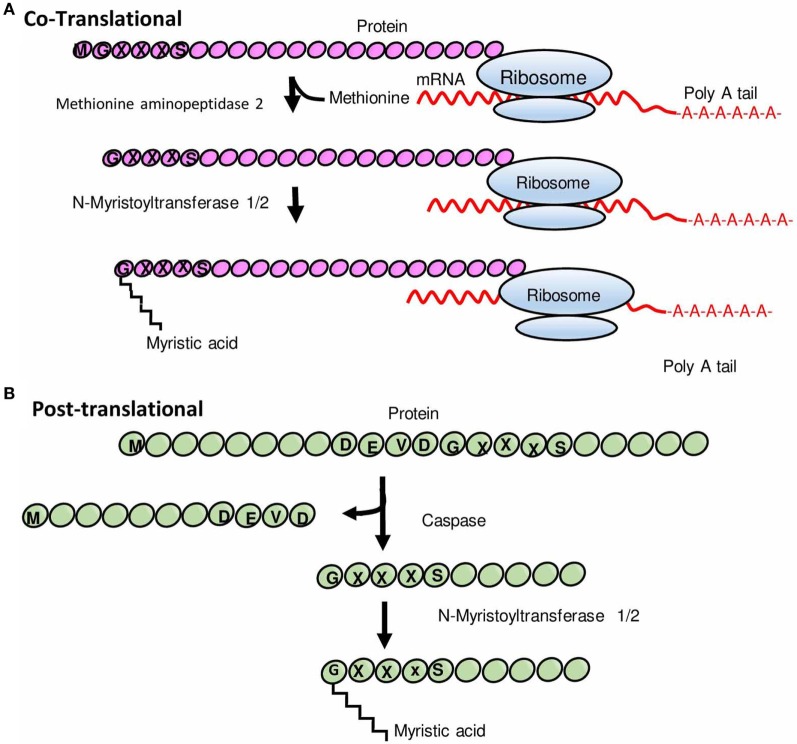Figure 1.
Schematic representation of N-myristoylation of proteins. (A) Cotranslational protein N-myristoylation. After the removal of an initiator methionine by methionine aminopeptidase 2, myristic acid (a 14-carbon saturated fatty acid) is transferred to the N-terminal glycine residue of a protein by N-myristoyltransferase (NMT). (B) Posttranslational protein N-myristoylation. Some proteins undergo myristoylation posttranslationally wherein proteins are first cleaved by a protease to expose glycine residue and thereafter a myristic acid is covalently attached to glycine residue by NMT. Modified from Ref. (5).

